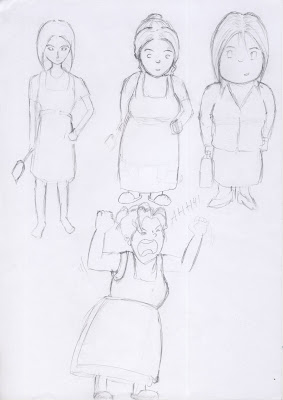 This is the grid layout that we apply to each page. The did not want to place the text on the image itself as we thought be more difficult for the kids to read the texts.
This is the grid layout that we apply to each page. The did not want to place the text on the image itself as we thought be more difficult for the kids to read the texts.Printing process
Our initial decision was to produce a hardcover copy of the book. A hard cover version would give our book a classic feel to it, similar to the Walt Disney fairy tale books such as Beauty and the Beast or Cinderella. However, we opted for the soft cover version of the book due to time constraints. Producing a hard cover book requires at least one week while a soft cover book required at least 3 days.
Fortunately, I managed to find a printer service who could print and bind the book in 30 minutes! The shop is called Leadership Centre at Peace Center, near Doby Ghaut MRT.
The printing was done on Saturday. 2 days before the presentation date.
On the day of the printing, I was given a variety of papers to choose from. There were glossy papers, cast coated, matte, machine coated, each of which were of varying thickness and feel. At the end of it, I opted for the story to be printed on matte coated paper and the glossy coated paper for the cover page. This would help differentiate the cover page from the rest of the pages.
The book is printed on both sides, bounded by stapling at the center.

















